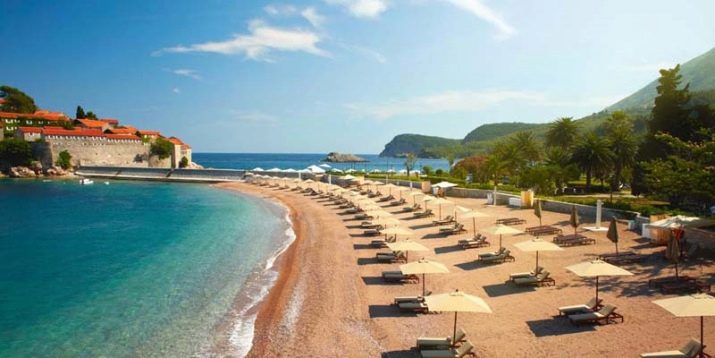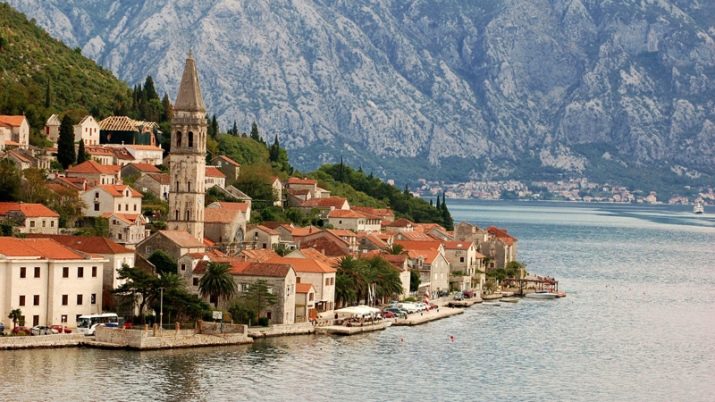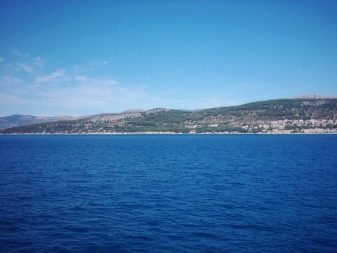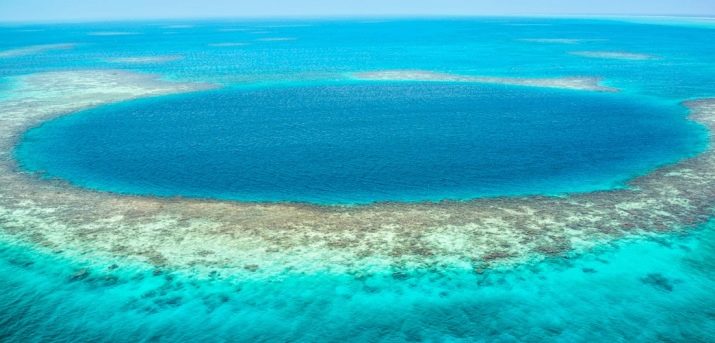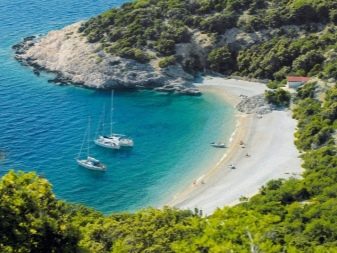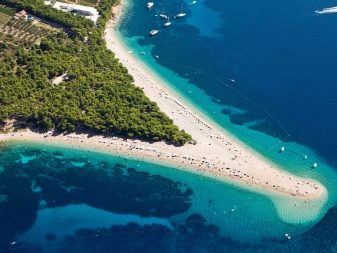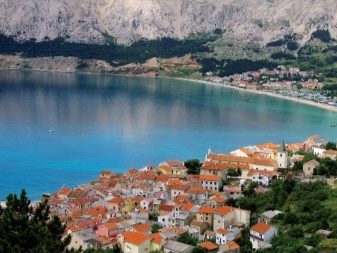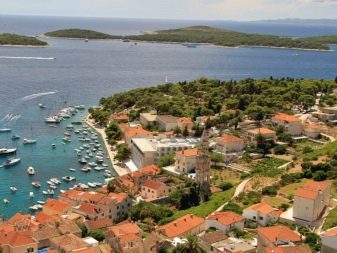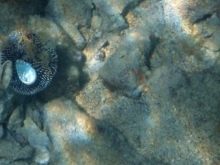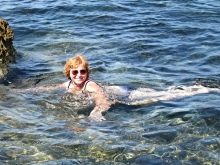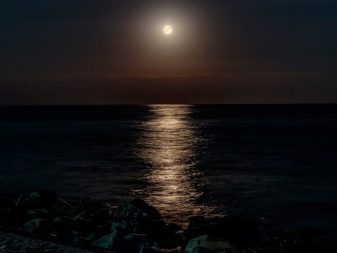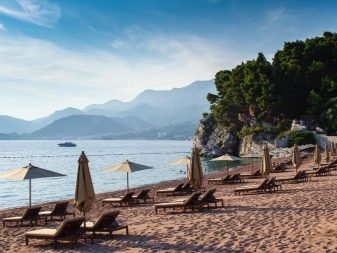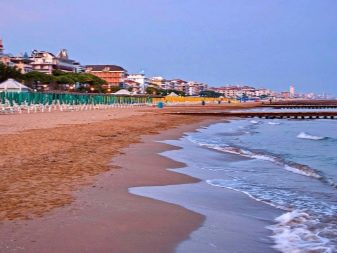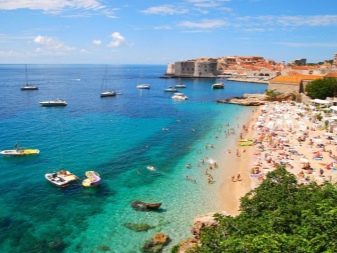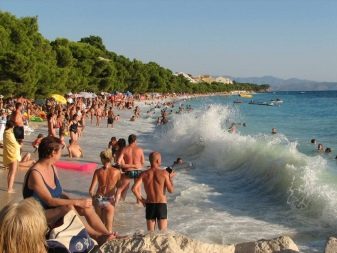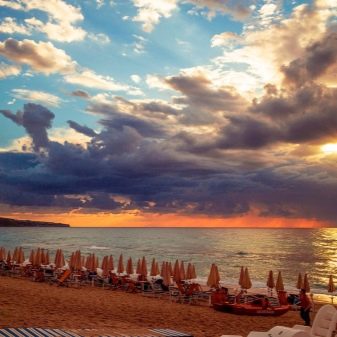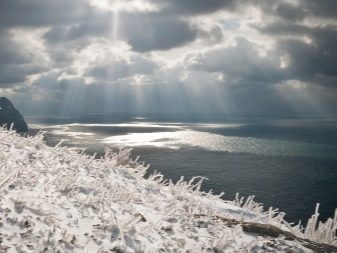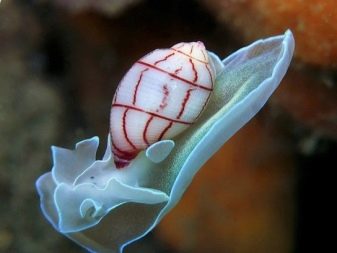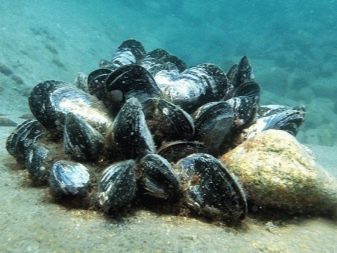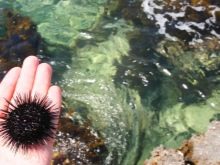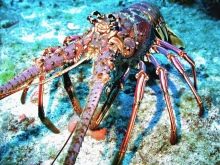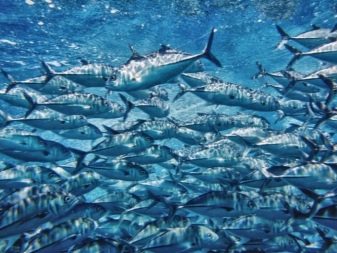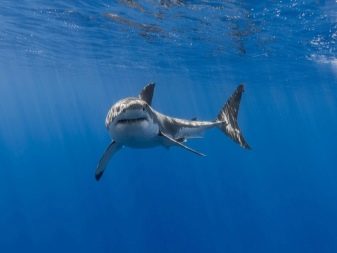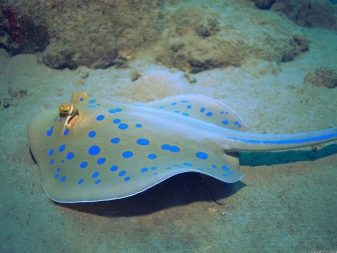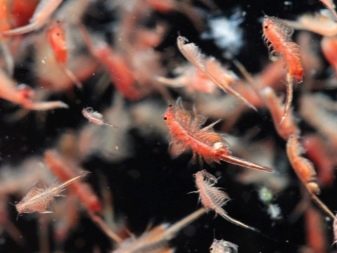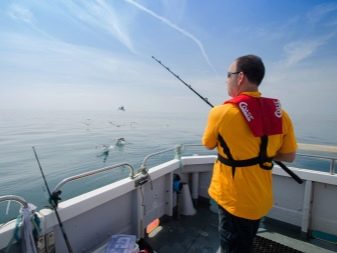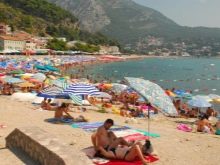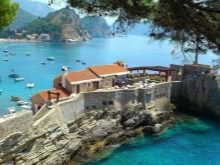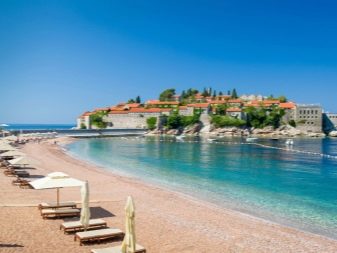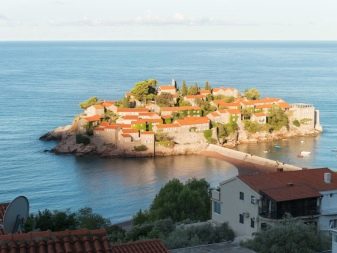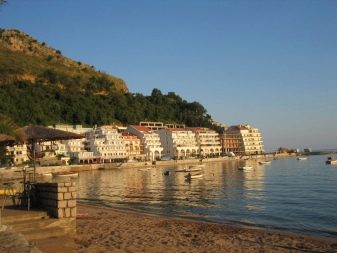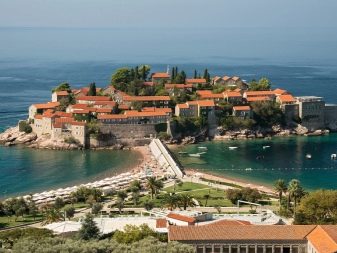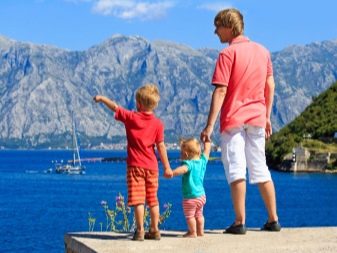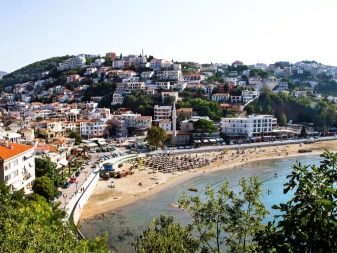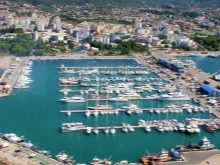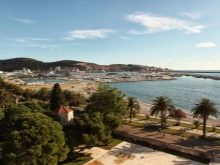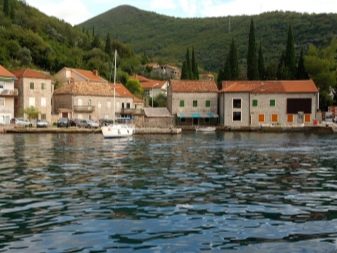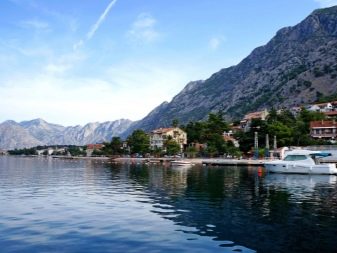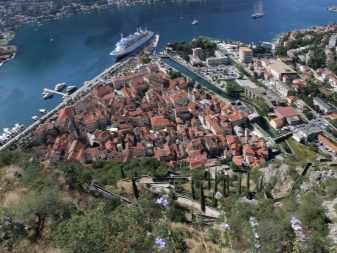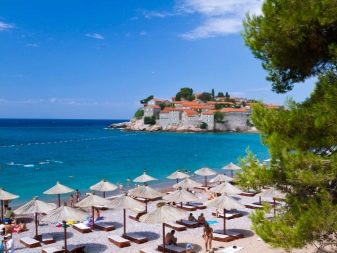Montenegro is a small Balkan state. Its population is equal to the population of the average Russian city and is a little over 600 thousand people. But for tourists this country is extremely attractive for many reasons.
A wonderful mild climate, small cozy towns, historical monuments, a varied holiday from quiet family to cheerful youth, excellent service, Mediterranean cuisine - all at affordable prices. But the real pearl of the country is a clean, warm and very beautiful Adriatic Sea.
Description
The Adriatic Sea lies between the Balkan and Apennine Peninsulas. It belongs to semi-enclosed seas and enters the water system of the Mediterranean basin, connecting with the Mediterranean Sea in the southern part through the Strait of Otranto, which locals romanticly call Gateway to the Adriatic and the Ionian Sea.
The length of the sea is a little less than 800 kilometers, and its average width is about 250 kilometers.
The coast in the west is low, rugged by lagoons, and in the east - mountainous, with many bays, where there are convenient harbors. There is a deep sea off the coast, which is very conducive to shipping, which has been actively developing here since ancient times.
Even then, the Adriatic was one of the main centers of shipping and trade; there are many large port cities on the coast. Of great importance for navigation is also the fact that this sea is considered one of the most calm and safe.
Adriatic difficult to call the deep sea. The average depth does not exceed 250 meters, and in the north, closer to the mainland, where land was once located and ancient cities stood, the bottom rises to 20 meters. To the south, the depth gradually increases.
The deepest depression - 1230 meters - is located in the south-east.
Islands, large and small, almost all settled. The largest of them (with an area of more than 300 kilometers) are called Cres, Brac, Krk and Hvar.
Since ancient times, the port of Adria is located in the delta of the Adige and Po rivers. At first, the Greeks called Adrias Kolpos only the northern part, then this name was given to the whole sea. Now from Adria to the sea coast as much as 25 kilometers, because of the sediments of the river changed their course.
Sea six countries called the Adriatic. Its waters wash the shores of Italy, Slovenia, Bosnia and Herzegovina, Croatia, Albania and Montenegro.
The share of the latter accounts for 200 kilometers of beautiful beaches.
A distinctive and very valuable feature of this sea is its extraordinary purity and transparency. A significant role in this phenomenon is played by the rocky bottom, which can be seen at a record 56 meters. This allows you to consider in detail the life of marine life, which gives the Adriatic resorts a special exotic charm.
Swimming in the Adriatic is easy, as the water is very salty - 38 ppm. This is explained by a small inflow of fresh water, only 2 large rivers and several small rivers flow into this sea.
The Adriatic is the only sea, the water in which has a bright, unusually beautiful blue color, gives it a large amount of minerals and salts, which is very good for health.
Temperature
Despite the proximity of the Mediterranean, the climate on the Adriatic is completely different, although some features of the Mediterranean are still present.
Spring begins here in March, when the air warms up above +10 degrees during the day, and active flowering of plants begins.
In April, the afternoon air temperature is above +20 degrees, and at night it can still drop to +15 degrees Celsius.
The most comfortable time for a holiday in Montenegro begins in May with the advent of the climatic summer. It is in May that the high tourist season opens, which lasts until October.
The air temperature at this time is already above +20 degrees, but the sea is still cool - +17.18 degrees, and it is a bit early to swim in it.
In summer, the Azores anticyclone rules the weather on the coast, clear, warm, even hot weather sets in, but the sea winds characteristic of this area — breeze, sirocco, boron, mistral — soften the heat. Storm at this time is rare.
In June, the average daily temperature is +28.30 degreesIn July, it rises to +32.36 degrees Celsius. The same indicators are characteristic for August.
In June, the water is also still quite cool, +18.23 degrees. By July, it warms in the south to +26 degrees, and in the north to +24 degrees.
The same temperature persists in August.
September and October are a great time to relax. The temperature of air and water is somewhat reduced, but remains quite comfortable for taking sea baths. The holiday season ends in October.
In November it gets colder, the air temperature can drop to +13 degrees, and the water temperature starts to drop rapidly.
Winters are cool, cloudy and rainy. At this time, up to 70 percent of all annual precipitation falls, and the water temperature drops sharply.
By February, even to +7.12 degrees. The air temperature in winter in some northern areas may drop to zero, and for a short time it may even be snowing.
In general, the water temperature is slightly lower than in other southern seas, which is explained by the high transparency of the water. Pure water heats up more slowly and worse than turbid.
Fauna
The flora and fauna of the Adriatic Sea are rich and very diverse. Many species are listed in the Red Book. Transparent water allows observing the life of sea creatures, and this is an attractive feature of the resort.
Algae has more than 750 species. There are brown, red and green. They are overgrown with seahorses.
The coastal zone is the habitat of mollusks, gastropods and bivalves. Durable shells allow them to endure even the strong blows of the waves. Here you can meet echinoderms and crustaceans.
Shoal - a paradise for oysters, mussels, small crabs.
There are exotic sea cucumbers, sea urchins and sea saucers.
Sea urchins on the Montenegrin and Croatian coasts are especially numerous, they lie at the bottom, they are easy to confuse with a stone and step on. Ordinary sea urchins are dangerous because their needles, digging into the skin, break, and they are very difficult to remove. The consequences of this can be acute pain, irritation, redness. suppuration.
Black sea urchins that live at shallow depths can cause a very painful injection. They are especially dangerous for swimmers with a mask, exploring the bottom, so for safety you should buy special slippers, which are often called coral.
Representatives of large crustaceans - lobsters and crabs live a little deeper.
Here also live cuttlefish, octopus, starfish, moray eels, eels and sea dragons can swim.
Flocks of commercial fish are the real wealth of the Adriatic. Tuna, sardine, mackerel, mackerel, pelamid are just some of the breeds.
Mammals are represented by two species: Dolphins and a very rare monk seal.
Sometimes the currents enter transparent jellyfish and hydroid polyps into the Adriatic waters, which glow in the dark. Among the jellyfish can meet and dangerous, so meeting with them is best avoided.
But "their" jellyfish in this sea is not found, they can only bring raging waves.
Sharks in this peaceful sea are rare, but still exist. This is a dwarf shark, white, blue, prickly, velvet-bellied, glowing and sea fox. It is worth fearing the giant shark, although there are very few representatives of this breed.
It is worth noting that the probability of meeting with a shark is negligible, there are no man-eating sharks here. The owners of powerful jaws and sharp teeth are much more dangerous - eels and moray eels, as well as a stingray-tail, the very name of which suggests that it has jagged spikes on its tail containing deadly poison.
Fire worms and anemonee can burn and cause severe pain, and electric shock can be obtained when meeting with an electric ramp, but it is almost impossible to meet it.
Plankton, worms, young fish and small crustaceans serve as food for many marine life. It is worth noting that in the waters of any sea, when meeting with its inhabitants, especially unknown ones, it is necessary to adhere to the only principle - neither disturb, nor catch, or touch, nor try to feed.
Aggression, they respond only to actions by the person who may be considered as an attack.
Recreation conditions
Distinctive features of rest in Montenegro - reasonable price, no visa for a short stay, convenience of hotels, high level of service and the ability to choose the most convenient beach.
A very well-kept beachfront is only 70 kilometers away.but three types of beaches have settled on it: concrete on pontoons, sand and pebble. They are usually called the Riviera, adding the name of a nearby major city.
The most beautiful, most popular, but also the most expensive resort is Budva. Riviera.
The nature here is truly magnificent, the hotels deserve the biggest stars, the service is appropriate. But the prices for food and souvenirs are very high here.
Good this city for active youth recreation. There are many sports competitions, music festivals. Night bars, restaurants, clubs will not let you get bored. The excursion program is also very rich and interesting.
To expensive resorts include Becici, Rafailovici, St. Stephen's Island.
The real decoration of these cities are examples of Mediterranean architecture.
You can relax in comfort on the largest beach in Montenegro in Petrovac. There is also a pier for small yachts, ships or just boats.
This town is especially suitable for a quiet family holiday or a holiday with children. In hotels and shops every detail is thought out for the entertainment and convenience of even the youngest guests.
With children you can have a great rest in Ulcinj.
There is a very convenient sandy beach, which has a gentle entrance to the sea, and the depth near the coast increases gradually.
Just two kilometers from Ulcinj, there is the Tropicana beach, equipped with water attractions, and there is a children's amusement park.
The cheapest resort is in Sutomore. Three-star hotels, rented apartments are affordable, but at the same time very comfortable. The beach is sandy, with small inclusions of pebbles.
Pebbly beaches are distinguished by the largest seaport in Montenegro - the city of Bar. It is the business capital of a country where, in addition to leisure, you can find inexpensive goods from Italy and other European countries.
The shores of bays are especially appreciated, the calm, shallow waters of which warm up best.
Pebbly and pontoon riviera of Herceg Novinsky Bay are famous.
So, the beach Zhanitsa was closed for a long time, the president rested here. Now this beach is accessible to all.
Another popular resort - Lepetane, which translates as "the city of beauties" - is located on the shores of Boka Kotorska Bay. Distinguishes this area more hot weather than the rest of the coast.
If you carefully consider the organization of the trip, decide on your preferences, rest in the beautiful and hospitable Montenegro on the coast of the amazing Adriatic Sea will satisfy every taste and will leave the most wonderful impressions.
Pros and cons of rest in Montenegro in the next video.

